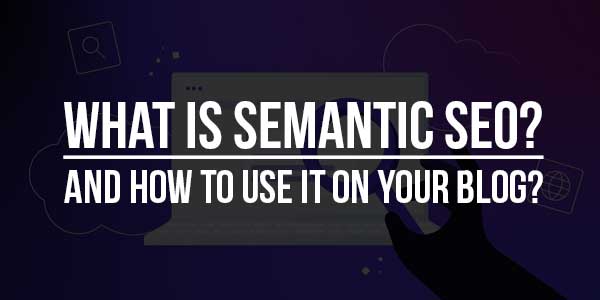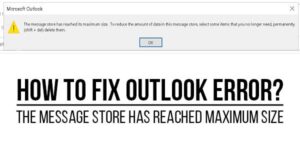
Table of Contents
What Is Semantic SEO? And How To Use It On Your Blog?
Search engines have evolved far beyond simple keyword matching. Today, Google and other search engines rely on Semantic SEO—understanding the meaning behind queries, content, and user intent—to deliver the best results. If you’re still optimizing for exact-match keywords alone, you’re missing out on massive ranking opportunities.
In this guide, we’ll break down Semantic SEO, explain its core concepts, and show you how to apply it to your blog for higher rankings and more organic traffic.
What Is Semantic SEO?
Semantic SEO is the practice of optimizing content so search engines can better understand its context, meaning, and relationship to user queries. Instead of focusing solely on keywords, it emphasizes:
- Context: How words relate to each other.
- Entities: People, places, things, and concepts.
- User Intent: Why someone is searching for a term.
- Topical Authority: Demonstrating expertise on a subject.
“Semantic SEO isn’t about tricking search engines—it’s about helping them understand your content so they can rank it appropriately.” — SEO Expert
Why Semantic SEO Matters in 2024
Google’s algorithms, like BERT and MUM, now analyze content semantically. They look at:
- Natural language patterns.
- Conceptual relationships.
- User behavior signals (dwell time, bounce rate).
If your content doesn’t align with semantic search principles, you’ll struggle to rank—even with perfect keyword optimization.
Key Concepts of Semantic SEO
EAV (Entity-Attribute-Value) 🔄
EAV is a data model that helps search engines categorize information:
- Entity: The main subject (e.g., “Tesla”).
- Attribute: A property of the entity (e.g., “founder”).
- Value: The specific detail (e.g., “Elon Musk”).
Semantic Triples 🔺
A semantic triple consists of three parts:
- Subject: The entity.
- Predicate: The relationship.
- Object: The connected entity or value.
Example: “Apple (subject) manufactures (predicate) iPhone (object).”
Knowledge Domain 📚
A knowledge domain is a structured collection of related information. For example, “Digital Marketing” includes SEO, PPC, and Content Marketing.
Contextual Domain 🌍
This refers to the broader subject area your content fits into. For example, a blog post about “best running shoes” belongs to the “Fitness” contextual domain.
Contextual Layer 🧩
Different layers of context help search engines understand depth. For instance:
- Macro Context: General topic (e.g., “Weight Loss”).
- Micro Context: Specific subtopic (e.g., “Keto Diet for Weight Loss”).
Source Context 📑
Where your content appears (blog, forum, news site) influences how Google interprets it.
Central Search Intent 🎯
The primary reason behind a search query:
- Informational: “How to tie a tie.”
- Navigational: “Facebook login.”
- Commercial: “Best DSLR cameras 2024.”
- Transactional: “Buy iPhone 15 online.”
Macro vs Micro Context 🔍🔬
Macro context covers broad topics, while micro context zooms into specifics. For example:
- Macro: “Healthy Eating.”
- Micro: “Benefits of Avocados for Heart Health.”
Central Entity 🏙️
The primary subject of your content. For a post about “Best Smartphones,” the central entity is “Smartphone.”
Query Templates 📝
Common search patterns like:
- “How to [action].”
- “Best [product] for [use case].”
Quality Threshold �
Google’s minimum content quality standards to rank. Low-quality content gets filtered out.
Ranking States 🏅
Different stages of ranking performance:
- Initial Ranking: Early positioning after indexing.
- Stable Ranking: Consistent performance.
- Decaying Ranking: Dropping due to outdated content.
Information Gain Score 📈
Measures how much new value your content adds compared to existing top-ranking pages.
Attribute Popularity ⭐
How often an entity’s attribute is mentioned in top-ranking content (e.g., “battery life” for smartphones).
Candidate Answer Passage 📝
A snippet from your content that could answer a user’s query directly.
Passage Ranking 📑
Google’s ability to rank specific passages from a page, not just the whole page.
Attribute Relevance 🔑
How closely an attribute relates to the central entity (e.g., “screen size” is highly relevant for TVs).
Re-Ranking 🔄
Google’s process of re-evaluating rankings based on fresh data.

69 Semantic Content Writing Rules 📝📜
Here are some key rules for semantic content writing:
- Use natural language, not forced keywords.
- Cover related subtopics (LSI keywords).
- Structure content with clear headings (H2, H3, H4).
- Link to authoritative sources.
- Answer common user questions.
Topical Map (Core & Outer Sections) 🗺
A topical map organizes your content strategy:
- Core Topics: Primary subjects (e.g., “SEO”).
- Outer Sections: Related subtopics (e.g., “On-Page SEO,” “Technical SEO”).
Topical Authority 👑
Becoming a go-to source on a subject by covering it comprehensively.
Content Brief (Questions Generation etc) 📑❓
Create a content brief that includes:
- Target keywords.
- User questions to answer.
- Semantic entities to include.
How To Implement Semantic SEO on Your Blog
1. Research User Intent
Analyze top-ranking pages to understand what searchers want.
2. Use Structured Data
Schema markup helps Google understand your content better.
3. Build a Topical Cluster
Interlink related posts to establish authority.
4. Write Naturally
Focus on readability and context, not just keywords.
5. Optimize for Passage Ranking
Create clear, concise sections that answer specific queries.
Final Thoughts
Semantic SEO is the future of search optimization. By mastering entities, context, and user intent, you can create content that ranks higher and satisfies both Google and your audience.
Start applying these principles today to future-proof your blog’s SEO strategy.


















Great explanation of semantic SEO, It’s fascinating how search engines are getting smarter at understanding context. While learning content strategy, I also looked up a Tally institute near me to build skills in data handling. Both areas really complement each other.
Welcome here and thanks for reading our article and sharing your view. This will be very helpful to us to let us motivate to provide you with more awesome and valuable content from a different mind. Thanks again.
Awesome post! If anyone’s on the search for great custom app development in Dubai, check us out—we’d love to help turn your ideas into reality!
Welcome here and thanks for reading our article and sharing your view. This will be very helpful to us to let us motivate to provide you with more awesome and valuable content from a different mind. Thanks again.
Awesome post! If anyone’s looking for a great custom app development company in Saudi Arabia, check us out—we’d love to help turn your ideas into reality!
Welcome here and thanks for reading our article and sharing your view. This will be very helpful to us to let us motivate to provide you with more awesome and valuable content from a different mind. Thanks again.
Awesome post! If anyone’s on the search for landscaping in springvale service in Australia, check us out—we’d love to help turn your ideas into reality!
Welcome here and thanks for reading our article and sharing your view. This will be very helpful to us to let us motivate to provide you with more awesome and valuable content from a different mind. Thanks again.
Amazing post. Thank you so much for this informative blog. this post was so helpful for me. I appreciate your work.
Welcome here and thanks for reading our article and sharing your view. This will be very helpful to us to let us motivate to provide you with more awesome and valuable content from a different mind. Thanks again.
Thank you for this insightful article on Semantic SEO. As educators in digital marketing, we emphasize the importance of understanding user intent and context in content creation. The strategies outlined, such as building topical authority and utilizing structured data, are crucial for aligning with modern search engine algorithms. We particularly appreciate the emphasis on writing naturally and focusing on entities and relationships, which not only enhances SEO but also improves user experience. This approach is essential for students and professionals aiming to stay ahead in the evolving digital landscape.
Welcome here and thanks for reading our article and sharing your view. This will be very helpful to us to let us motivate to provide you with more awesome and valuable content from a different mind. Thanks again.
Thanks for sharing this insightful post.
Welcome here and thanks for reading our article and sharing your view. This will be very helpful to us to let us motivate to provide you with more awesome and valuable content from a different mind. Thanks again.